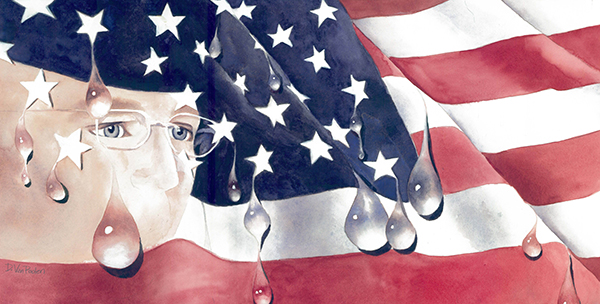Imagine Tocqueville emerging from the Wayback Machine and setting foot in America today
 In 1831, Alexis de Tocqueville, a 26-year-old Frenchman with an interest in politics, political philosophy and international affairs, made a nine-month trip to the United States. He travelled extensively through the sprawling country and the result was De la Démocratie en Amérique, two volumes on the laws, habits and mores of Americans and their political, intellectual, religious and social life. Tocqueville went to America, as he said, in search of an “image of democracy itself”. For, it was the land where democracy was in its most perfect form. Tocqueville thought a study of America offered an opportunity to portray the “democratic revolution” underway in the West.
In 1831, Alexis de Tocqueville, a 26-year-old Frenchman with an interest in politics, political philosophy and international affairs, made a nine-month trip to the United States. He travelled extensively through the sprawling country and the result was De la Démocratie en Amérique, two volumes on the laws, habits and mores of Americans and their political, intellectual, religious and social life. Tocqueville went to America, as he said, in search of an “image of democracy itself”. For, it was the land where democracy was in its most perfect form. Tocqueville thought a study of America offered an opportunity to portray the “democratic revolution” underway in the West.
Tocqueville was a young millennial, to use today’s generational label for 19th century people’s propensities. And in keeping with millennials’ habits of thought, he valued meaningful motivation, was open to change, prepared to be adaptive and had a passion for learning. It was hardly surprising then that he found America to be a singular case study for the interpretation of modern democracy, and the Americans he observed, outstanding examples of democratic citizens.
Fast forward to 2022 and imagine Tocqueville emerging from the Wayback Machine, the fictional time machine from the Rocky and Bullwinkle cartoon? Imagine Tocqueville setting foot in America today, nearly 200 years on from his original journey. What would he find? What would he write? De la Démocratie en Amérique veut en partie être comme la Hongrie. Literally, democracy in America partly wants to be like Hungary.
Where once America was the template, today it’s Hungary, a central European country of 10 million, whose chief distinction is its metamorphosis into an “illiberal democracy”.
On January 3, former US president Donald Trump endorsed Hungary’s prime minister Viktor Orban’s re-election efforts for this coming spring, pledging his “complete support” to him. The Republican Party and most Americans did not express outrage at Mr Trump’s support for a man, who together with his Fidesz party has accomplished the following in Hungary: weakened its independent and democratic institutions; rewritten election laws to favour Fidesz; changed school textbooks; curbed media freedoms; overhauled the Constitution and changed the composition of the judiciary.
In fact, Mr Orban has become a hero to a part of America that believes de la Démocratie en Amérique veut en partie être comme la Hongrie.
In late September, Mr Trump’s vice-president Mike Pence was at a right-wing summit with Mr Orban. In August, Fox News host Tucker Carlson was in Hungary, paying obeisance to Mr Orban.
As I have written before, much is being made of the ideological kinship of the Hungarian establishment and the American right. What may be more worrying by far is the twinning of political paths. Perhaps Hungary isn’t a template so much as a reaffirmation of the road being taken.

